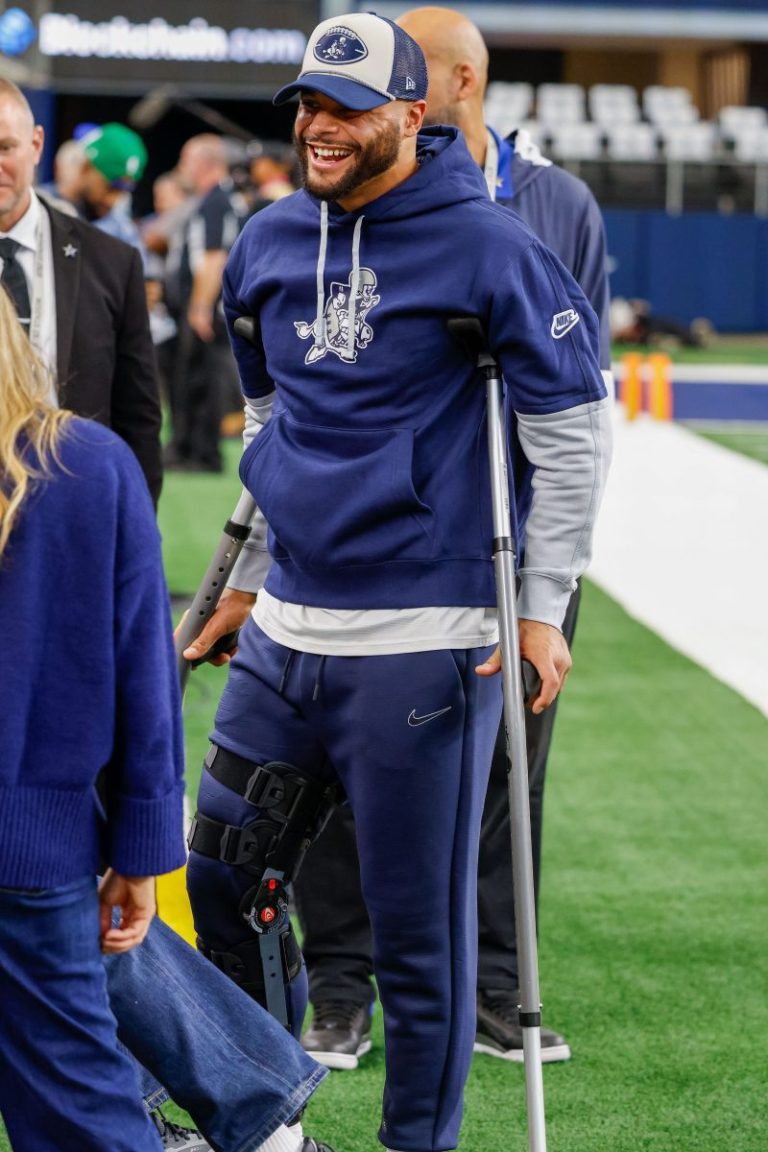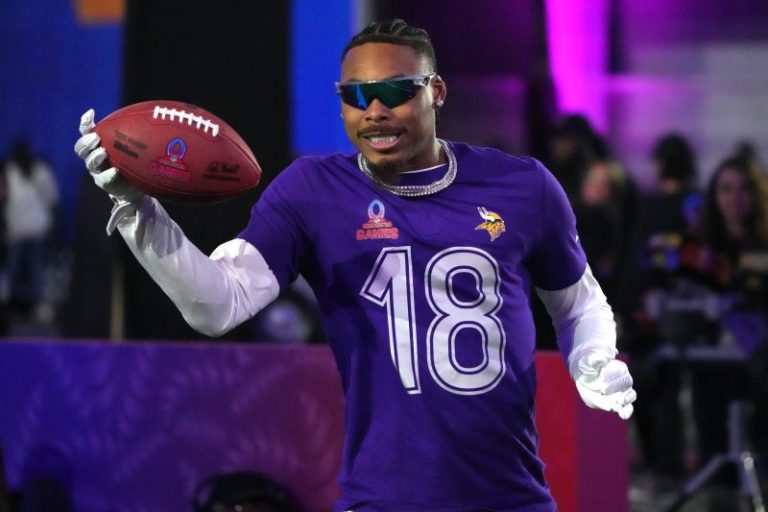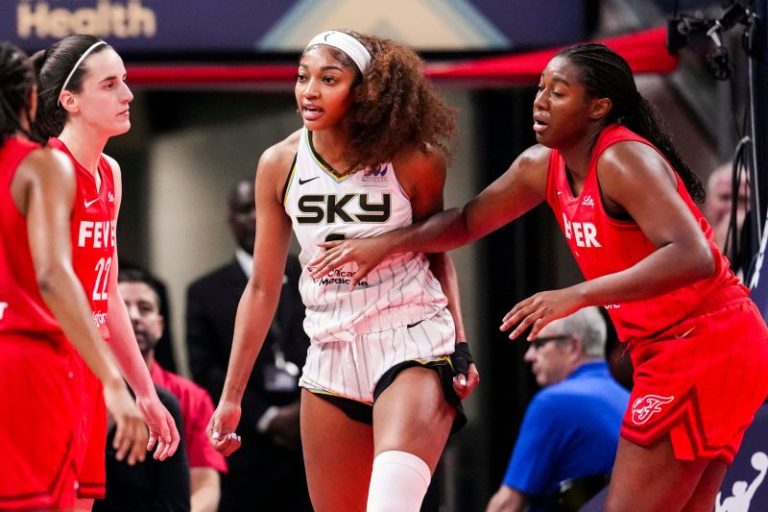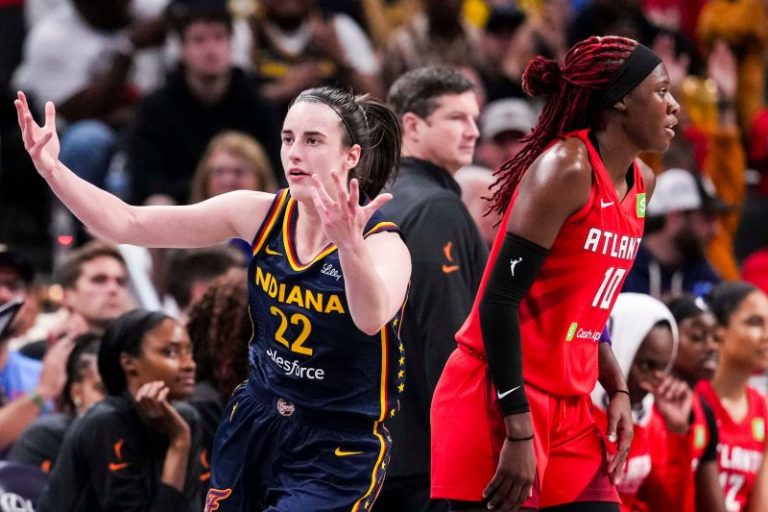The Oklahoma City Thunder stomached a nauseating shooting performance from MVP finalist Shai Gilgeous-Alexander through two-and-a-half quarters, absorbed a 3-point barrage from Minnesota’s Julius Randle, relied on their trademark depth and versatility and emerged with a 114-88 victory in Game 1 of the Western Conference finals.
Gilgeous-Alexander missed 11 of his first 13 shots but found his shooting touch in the second half, scoring 12 of his game-high 31 points in the third quarter and finishing with nine assists, five rebounds and three steals. All-Star Jalen Williams added 19 points, eight rebounds, five assists and five steals, and Chet Holmgren had 15 points and seven rebounds.
The Thunder took control of the game in the second half, closing the third quarter on a 20-6 run for a 76-56 lead and Oklahoma City extended its lead to 99-84 with 4:24 left in the fourth quarter. Oklahoma City outscored Minnesota 70-40 in the second half.
While bench points were close (32-26 OKC), Minnesota’s reserves shot just 9-for-37 from the field, including 5-for-28 on 3-pointers. The Thunder, which had the No. 1 defense during the regular season, held the Timberwolves to 34.9% shooting from the field and 29.4% on 3s.
Randle scored 20 points and made five 3s in the first half, but he had just eight points in the second half. Timberwolves star Anthony Edwards had a pedestrian 18 points and nine rebounds. He left the game briefly in the first quarter to check on a bothersome right ankle. He returned in the second quarter and appeared fine.
While just one game, the Game 1 winner is important. Game 1 winners in a best-of-seven series have won the series 75.4% of the time, and teams that win Game 1 of a best-of-seven series at home go on to win the series 84.4% of the time.
Game 2 is Thursday in Oklahoma City (8:30 p.m. ET, ESPN). Catch up on all the highlights from Game 1 with a recap from USA TODAY Sports:
Thunder vs. Timberwolves highlights
Jaden McDaniels fouls out
Minnesota’s Jaden McDaniels fouled out with 5:21 remaining in the game as the Timberwolves trailed 81-93.
End of Q3: Thunder 76, Timberwolves 66
The Thunder trailed by as many as nine points in the first half, but Oklahoma City found its rhythm in the third quarter and went on a 20-6 run to take an 10-point lead into the fourth quarter.
Shai Gilgeous-Alexander scored 12 of his 23 points in the third quarter, while Jalen Williams added 15 points. The Thunder is shooting 45.9% from the field, while the Timberwolves are shooting 33.9%.
The Timberwolves were outscored 32-18 in the third quarter. To make matters worse, Edwards picked up his fourth foul with 1:08 remaining in the third quarter. Jaden McDaniels also has four fouls. Edwards is up to 18 points and seven rebounds, while Julius Randle has 20 points (all scored in the first half). The Timberwolves bench has been held to 12 points.
Halftime: Timberwolves 48, Thunder 44
The Timberwolves head to the locker room with a four-point lead over the Thunder, thanks to a monster first half from Julius Randle. Randle has 20 of Minnesota’s 48 points, shooting 6-of-8 from the field and 5-of-6 from 3-pointers. His five 3s already marks a playoff career-high for Randle.
The Timberwolves are 10-of-28 collectively from 3, while the Thunder have only hit 3-of-8 3-pointers. Oklahoma City, however, has done most of its damage inside and has outscored Minnesota 22-4 in the paint.
Despite having a team-high 11 points, Oklahoma City’s Shai Gilgeous-Alexander has struggled so far. He’s 2-of-13 from the field and 0-of-2 from 3, but he has made 7-of-9 free throws to save his stat line.
The Timberwolves have surrendered 11 turnovers, which has translated to 18 points for the Thunder.
Anthony Edwards returns after ankle tweak
Just one quarter into the Western Conference finals, the Minnesota Timberwolves got an injury scare — and it concerns their best player.
With less than a minute to play in the period, All-Star shooting guard Anthony Edwards turned his right ankle while driving through the lane against the Oklahoma City Thunder when he landed on his foot, tweaking it. Edwards was fouled on the play and immediately grabbed at his ankle. He appeared to be in some discomfort.
Edwards stayed in the game and made one of his two free throw attempts after the injury. ESPN cameras showed that, after the quarter ended, Edwards went into the locker room, where he remained at the start of the second quarter, but he returned to the floor with 7:01 remaining in the half.
Read Lorenzo Reyes’ full injury report here.
End of Q1: Timberwolves 23, Thunder 20
The Timberwolves have a three-point advantage over the Thunder after one quarter. Anthony Edwards has a team-high 7 points (2-of-3 FG, 1-of-1 3PT) for Minnesota, but he headed back to the locker room limping with an apparent ankle injury. He appeared to tweak his right ankle after landing on Alex Caruso as he drove to the basket in the closing minutes of the first quarter.
Despite coming off nearly a week of rest, the Timberwolves came out red-hot and jumped to a 8-0 lead over the Thunder, with their first five points coming from Minnesota’s Jaden McDaniels. The Thunder settled in and took their first lead of the night, 17-16, with 4:58 remaining.
The Thunder’s relentless pressure was on full display and more than half of their points came off turnovers. The Timberwolves were forced into seven turnovers that Oklahoma City converted into 13 points. Thunder All-Star Shai Gilgeous-Alexander has a game-high 9 points (2-of-8 FG, 0-of-2 3PT).
What time is Timberwolves vs. Thunder?
Game 1 of the NBA’s Western Conference Final series between the Minnesota Timberwolves and Oklahoma City Thunder gets underway at 8:30 p.m. ET/7:30 p.m. CT.
How to watch Timberwolves vs. Thunder: TV, stream
- Time: 8:30 p.m. ET/7:30 p.m. CT
- Location: Paycom Center; Oklahoma City, Oklahoma
- TV: ESPN
- Stream: ESPN+, Fubo
Timberwolves-Thunder starting lineups
The Timberwolves and Thunder are sticking with the same lineups they’ve been riding throughout the 2025 NBA Playoffs:
Minnesota Timberwolves
- Jaden McDaniels
- Julius Randle
- Rudy Gobert
- Anthony Edwards
- Mike Conley
Oklahoma City Thunder
- Jalen Williams
- Chet Holmgren
- Isaiah Hartenstein
- Lu Dort
- Shai Gilgeous-Alexander
What is Thunder’s mascot?
The Oklahoma City Thunder’s mascot is none other than Rumble the Bison, who is named after the sound of thunder. Rumble the Bison made a special appearance on ESPN’s pregame show, leading many to wonder why a bison is the mascot? Well, bison are the official state animal of Oklahoma.
Mike Conley stats
Conley averaged a career-low 8.2 points, 2.6 rebounds and 4.5 assists in 71 games this year, which marks his 18th season in the NBA. He has averaged 6.8 points, 3.8 assists and 3.3 rebounds in 10 games in the 2025 playoffs.
Stars align with Shai Gilgeous-Alexander, Anthony Edwards
Look at the NBA finalists and champions. You need stars to win, and both teams have them. Thunder guard Shai Gilgeous-Alexander is an MVP finalist and very well could win the award for the first time in his career. He’s a scorer first, especially inside the 3-point line and at the foul line, but he can create for others.
Timberwolves star Anthony Edwards will make one of the three All-NBA teams this season as he gets closer to MVP territory. Just 23 years old, Edwards’ ability to score, rebound, pass and defend makes him difficult to match-up with offensively and defensively. He’s fun to watch and has a delightful swagger to his game.
X-factors on strong rosters
Every game has a player who makes a bigger-than-expected contribution. It’s not always the same player, especially with the depth Minnesota and Oklahoma City possess. For Minnesota, it might be Jaden McDaniel’s defense or Rudy Gobert’s rim protection. Or a timely 3-pointer from Mike Conley or a big game from Donte DiVincenzo or Naz Reid.
For the Thunder, Alex Caruso was that player in Game 7 against Denver, with 11 points, three assists, three steals and intense defense. Chet Holmgren – at 7-1 – can make 3s, rebound and block shots, presenting unique problems for the opponent. Center Isaiah Hartenstein can deliver a double-double and Lu Dort’s shooting and defense can impact the outcome. The Thunder will go deep into their bench with Aaron Wiggins and Cason Wallace, Isaiah Joe and Jaylin Williams.
Thunder coach Mark Daigneault on T’Wolves’ officiating pleas
Oklahoma City’s Mark Daigneault isn’t worried about the Timberwolves trying to campaign for favorable calls.
‘I mean, teams, players, coaches are going to use the media to try to influence the whistle as a competitive advantage,’ Daigneault said Monday. ‘The margins are thin. In the playoffs, everyone’s looking for an advantage. Some teams will go to that to do that.’
Daigneault continued: ‘My mentality on that is, it’s the Western Conference finals. The (referees) working these games aren’t here for an accident. I don’t think they’re influenced by anything I say, anything our team says. I don’t think they’re compromised by anything anybody else says. You know, we just are going to focus on what we can control. If they are influenced by anything that anybody says in the media, they shouldn’t be working in the Western Conference finals, and everyone would know, because it’s been pretty consistent to this point. So that’s how I look at it.’
Timberwolves vs. Thunder predictions: Expert Picks
USA TODAY Sports experts make predictions ahead of the series Games 1:
Timberwolves vs. Thunder series winner
- Jeff Zillgitt: Thunder in seven
- Lorenzo Reyes: Thunder in six
- Heather Tucker: Thunder in six
- James Williams: Thunder in six
- Jordan Mendoza: Timberwolves in six
- Scooby Axson: Thunder in six
- Cydney Henderson: Thunder in seven
Timberwolves vs. Thunder Game 1 winner
- Jeff Zillgitt: Oklahoma City Thunder
- Lorenzo Reyes: Oklahoma City Thunder
- Heather Tucker: Oklahoma City Thunder
- James Williams: Oklahoma City Thunder
- Scooby Axson: Oklahoma City Thunder
- Cydney Henderson: Oklahoma City Thunder
Timberwolves vs. Thunder odds
Odds via BetMGM as of Monday, May 19
Game 1 odds
- Line: Thunder – 7.5
- Moneyline: Thunder -325, Timberwolves +260
- Over/under: 215.5
Odds to win Western Conference Final
- Oklahoma City Thunder -350
- Minnesota Timberwolves +280
This post appeared first on USA TODAY










